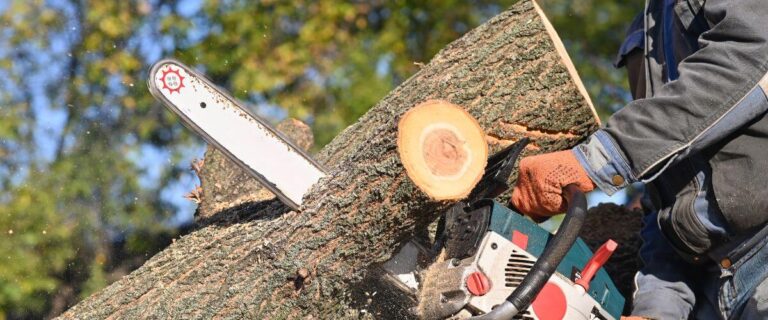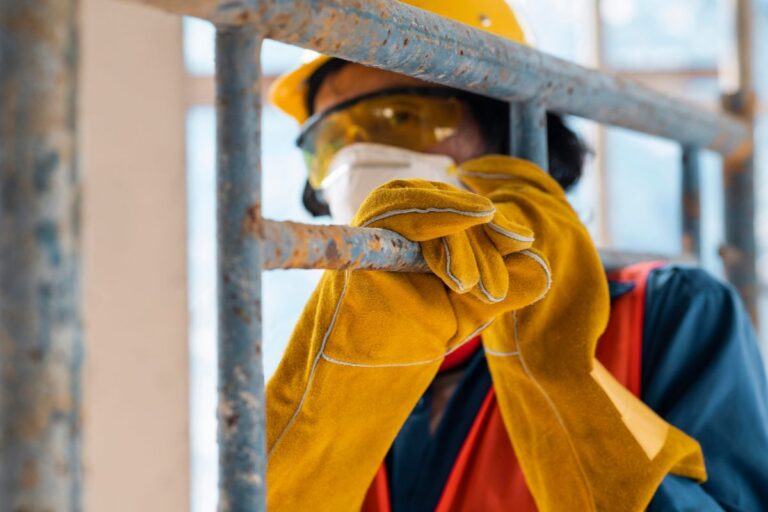Mississippi homeowners know all too well how quickly a storm can transform a peaceful yard into a chaotic mess. Strong winds, heavy rain, and lightning can leave fallen trees, broken limbs, and unstable trunks, creating immediate hazards for your home, family, and property.
When storm damage strikes, quick action is crucial. Delaying tree removal can result in injuries, property damage, and even insurance complications. This guide will walk you through the essential steps to safely handle storm-damaged trees, when to call a professional, and how to prevent future emergencies — all while ensuring compliance with Mississippi regulations and safety standards.
At Griffin Solutions, we specialize in 24/7 emergency tree removal services across Mississippi, providing fast, professional, and insured solutions for homeowners in Brookhaven, Jackson, Hattiesburg, and surrounding areas.
Assess the Damage Safely
After a storm, your first priority is safety. Never approach a damaged tree without evaluating the risks first.
Key safety steps include:
Avoid standing beneath broken branches or leaning trees.
Stay clear of trees touching power lines; always call the utility company first.
Watch out for loose debris, hanging limbs, or unstable ground near uprooted trees.
Document the damage with photos or video for insurance claims.
Identifying immediate hazards early helps prioritize which trees need urgent attention and reduces the risk of accidents during cleanup.
Contact a Licensed Emergency Tree Service
Storm-damaged trees are unpredictable. Even a partially broken limb can snap unexpectedly, making DIY removal extremely dangerous.
Hiring a licensed and insured tree service is the safest option. Professional arborists like Griffin Solutions bring:
Expert assessment of structural stability
Proper equipment for lifting and cutting heavy limbs
Safe debris removal practices
Insurance coverage for property or injury liability
Professional emergency services also help prevent further damage during the removal process, ensuring your home and yard remain protected.
Prioritize Removals Based on Risk
Not all storm-damaged trees pose the same level of threat. Professionals prioritize removals to address immediate dangers first:
High-Risk Trees: Leaning toward homes, vehicles, or power lines.
Medium-Risk Trees: Partially damaged trees that could fall or drop limbs in future storms.
Low-Risk Trees: Trees with minor branch damage or debris.
Certified arborists assess each tree’s stability and recommend whether it should be removed, trimmed, or stabilized. This ensures efficient and safe recovery from storm damage.
Document Damage for Insurance Claims
Insurance coverage can significantly reduce the cost of storm-related tree removal. Homeowners should:
Take before-and-after photos of damaged trees, branches, and surrounding property.
Keep a record of professional assessments provided by your tree service.
File claims promptly and provide detailed documentation to your insurance company.
Licensed services like Griffin Solutions often provide reports required for claims, helping homeowners receive faster approvals and accurate payouts.
Post-Removal Cleanup and Yard Safety
Removing storm-damaged trees doesn’t end with cutting the trunk. Complete cleanup is essential for safety and aesthetics:
Stump Grinding: Prevents tripping hazards and new unwanted growth.
Debris Disposal: Branches, leaves, and logs are removed or recycled responsibly.
Property Inspection: Checks for hidden damage to fences, structures, or underground utilities.
Replanting Recommendations: Consider replacing removed trees to maintain property value and environmental balance.
Professional crews ensure the entire process is handled safely, efficiently, and in compliance with local regulations.
Preventing Future Storm Damage
While storms are unpredictable, proactive tree maintenance greatly reduces future risks. Recommended measures include:
Regular Trimming and Pruning: Removes weak or dead limbs before they become hazards.
Cabling and Bracing: Supports vulnerable branches or trunks during high winds.
Seasonal Inspections: Certified arborists identify structural or root issues.
Soil and Mulch Management: Ensures proper hydration and stability for trees.
Planting Wind-Resistant Species: Strategically chosen trees withstand storms better.
Homeowners who invest in preventive care save money, reduce emergency calls, and keep their property safer year-round.
Why Choose Griffin Solutions for Emergency Tree Removal
Griffin Solutions combines expertise, equipment, and local knowledge to provide top-tier emergency tree services throughout Mississippi.
Key advantages include:
24/7 Emergency Response: Immediate assistance after storms or natural disasters.
Licensed & Insured Arborists: Safety and compliance guaranteed.
Comprehensive Services: Tree removal, trimming, stump grinding, and debris cleanup.
Insurance Support: Professional documentation for homeowners’ claims.
Local Expertise: Knowledge of Mississippi’s tree species, weather patterns, and municipal regulations.
Whether it’s a fallen oak in Brookhaven, a storm-leaning pine in Jackson, or debris cleanup in rural counties, Griffin Solutions ensures your property is restored safely and efficiently.
Key Takeaways
Storms can strike without warning, but you can minimize their impact with quick action and professional support. Remember:
Always assess hazards safely before approaching damaged trees.
Contact a licensed tree service for emergency removal — DIY is dangerous.
Prioritize removals based on risk to property and safety.
Document everything for insurance claims.
Invest in preventive maintenance to reduce future emergency needs.
Proactive care and expert response keep your Mississippi home safe, your landscape healthy, and your costs manageable.




